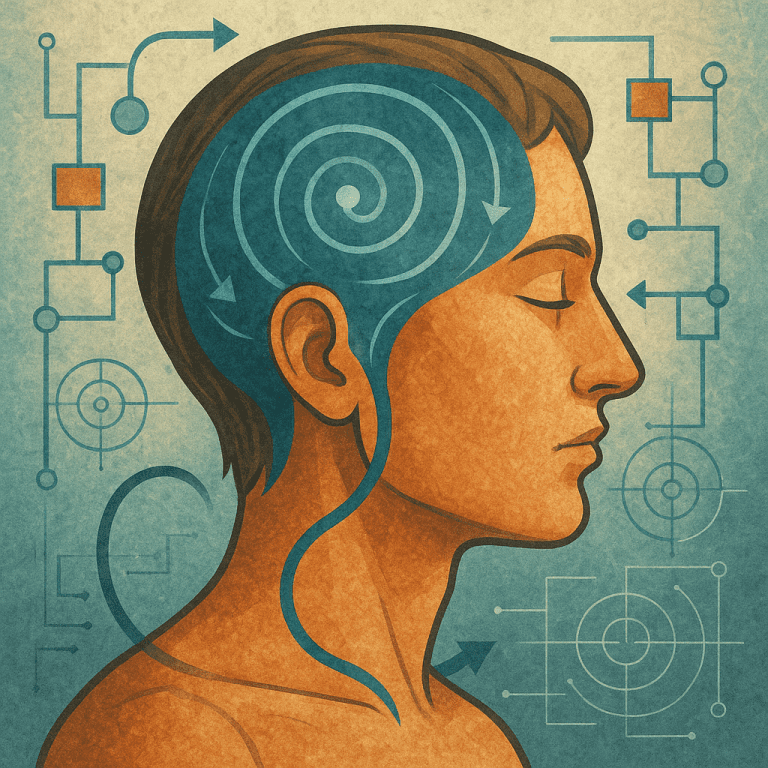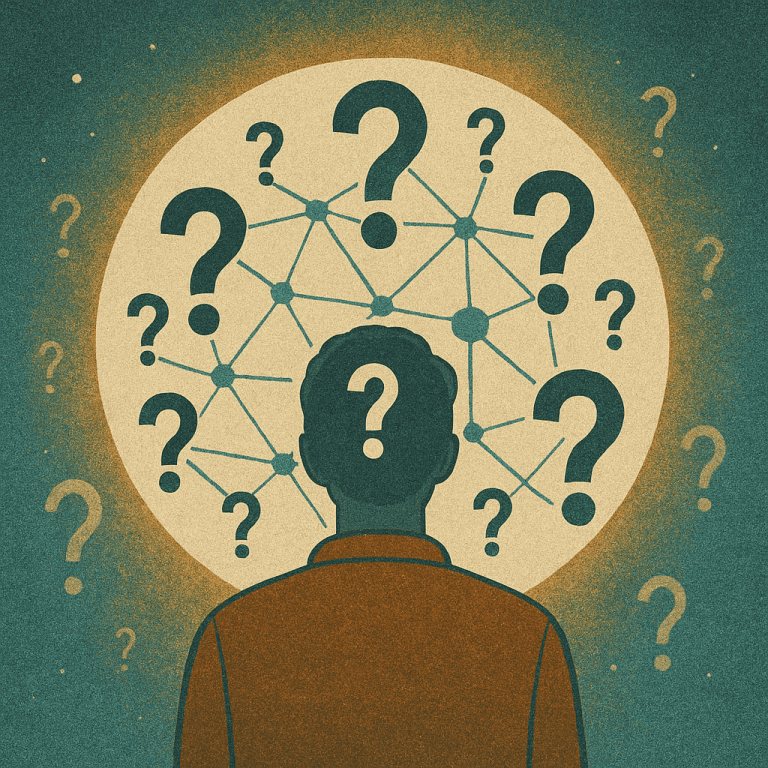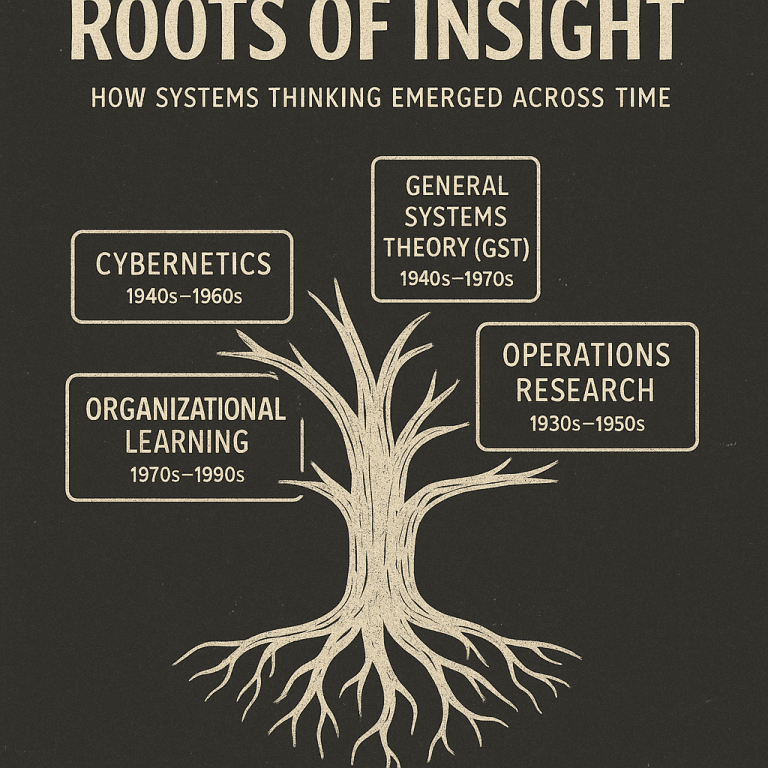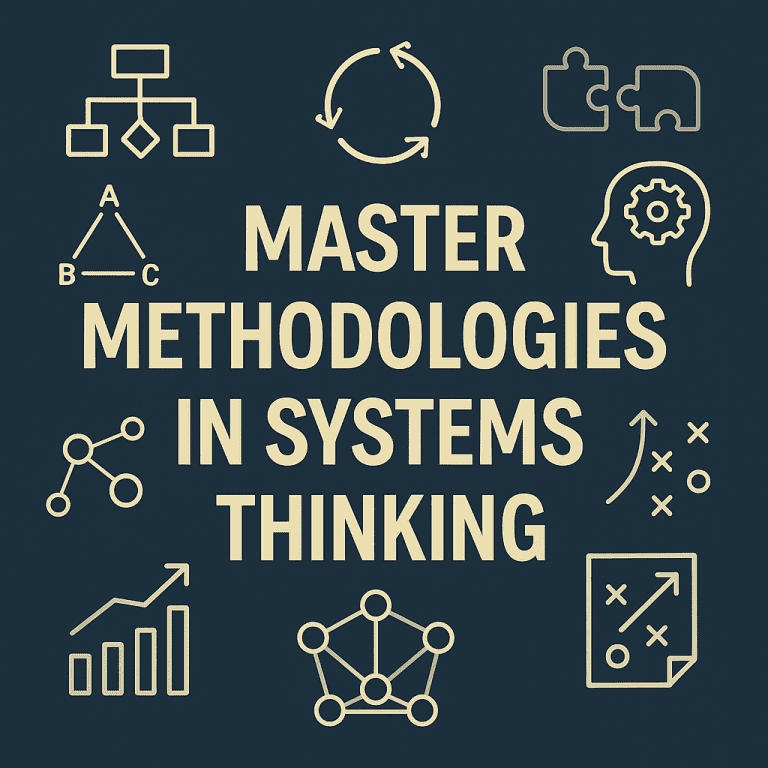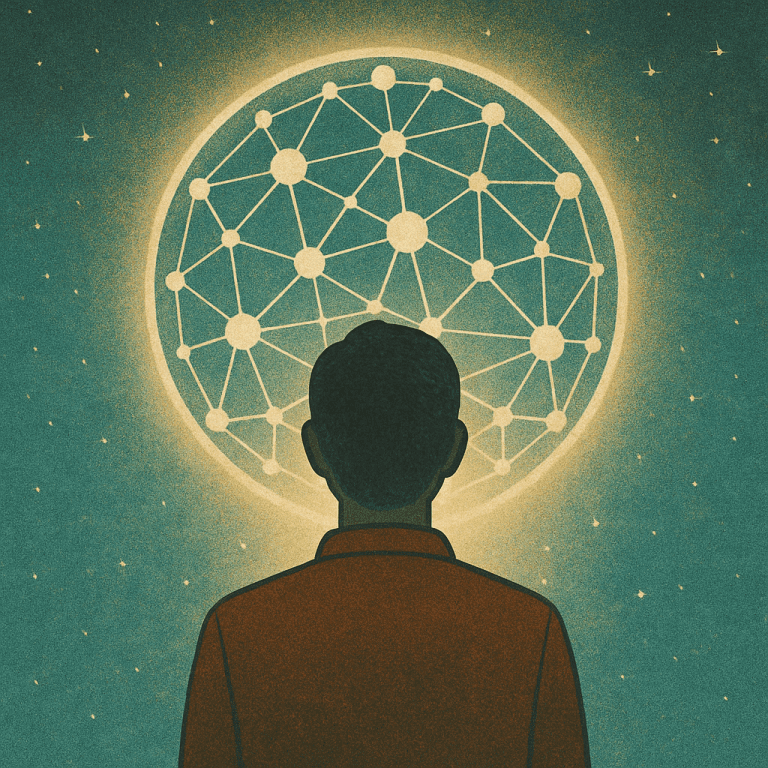What is a System, Really?
Seeing the Hidden Patterns in Everyday Life
In life, things are rarely just “things.”
A team isn’t just people.
A company isn’t just buildings and tasks.
A city isn’t just roads and rules.
They’re systems.
And once you learn to see systems — really see them — the world begins to whisper in a new language.
🌀 So… What Is a System?
A system isn’t a thing.
It’s a set of interrelated elements, connected by relationships, and working together toward a purpose.
It also lives within a broader environment — constantly influencing and being influenced by it.
Let’s break it down:
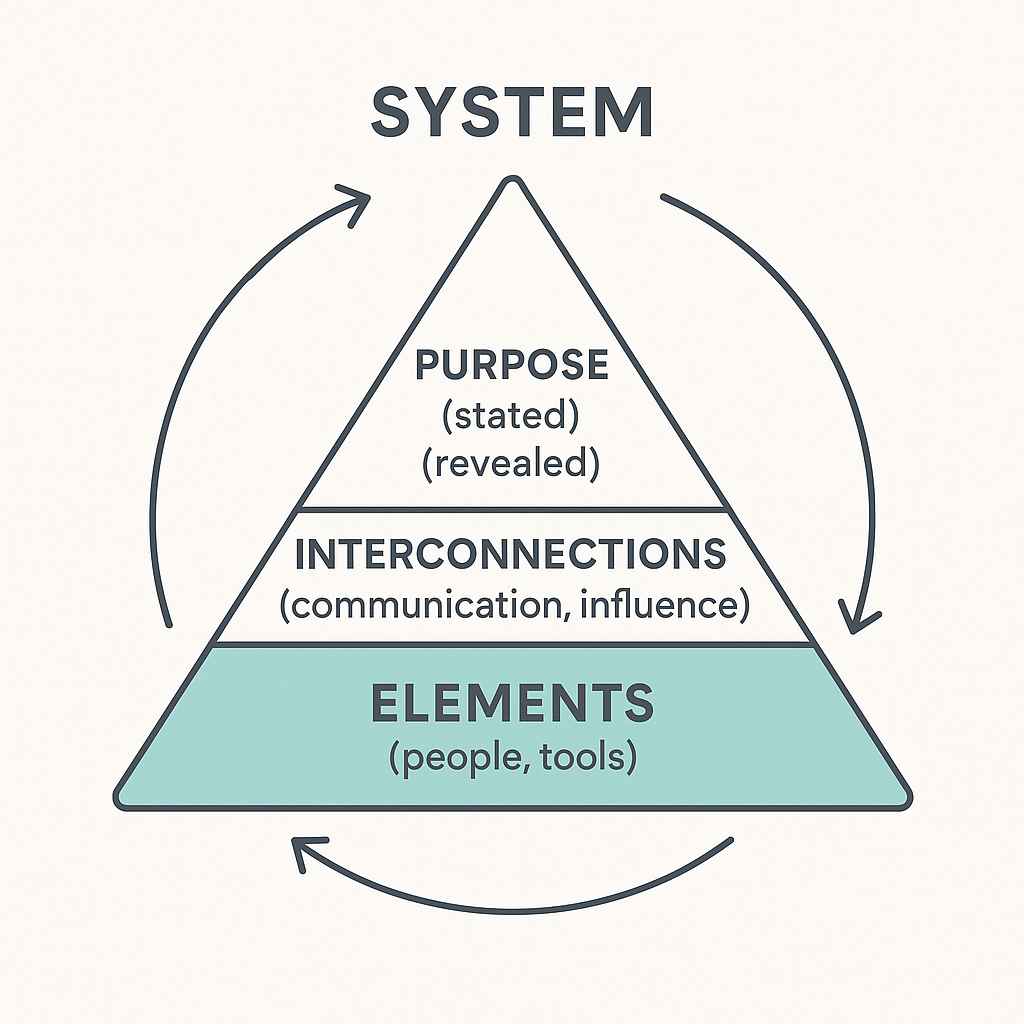
🔹 Elements
These are the parts that make up the system — some visible, others not.
They can be tangible (people, machines, products, data) or intangible (beliefs, values, rules, culture).
- In a hospital: doctors, patients, medical records, medication, beds, billing software.
- In a digital product: code, user interface, servers — but also the product team, user feedback, and company values.
🔹 Interconnections
These are the relationships and flows between the elements — the glue that makes the parts a system.
Often invisible, they include communication, influence, dependencies, feedback, and trust.
- In a hospital: how lab results reach a doctor, how nurses coordinate care, how trust flows between staff and patients.
- In a digital product: how features are prioritized, how users interact with the design, how data loops into decisions.
🔹 Purpose
This is the reason the system exists — its function or goal.
Sometimes it’s written in a mission statement. More often, it’s revealed by what the system actually does, not what it says it does.
- In a hospital: Officially, “to provide care.” But is it also “to reduce liability” or “maximize billable hours”?
- In a digital product: “To help users” might be one goal — but is it also “to collect user data” or “dominate the market”?
🧠 A powerful system is more than the sum of its parts — its value comes from the way parts connect and work together.
A weak system is often less than the sum — disconnected, conflicted, or confused.
🧭 Holism vs. Reductionism — A Consultant’s Lens
“The whole is more than the sum of its parts.” — Aristotle
Most of us are trained to think in parts. This is reductionism — the habit of breaking things down and solving problems in isolation.
- Sales are down? Fix the sales team.
- Deliveries are late? Fire the delivery guy.
- Morale is low? Hire a coach.
This works for simple, isolated problems.
But in today’s world of complex, interdependent systems, reductionism often:
- Creates unintended side effects
- Moves problems elsewhere in the system
- Treats symptoms, not causes
- Misses high-leverage opportunities
Holism says:
“Zoom out. What is this part connected to? What is the whole system doing?”
| Reductionism | Holism |
|---|---|
| Isolates parts | Connects the whole |
| Treats symptoms | Diagnoses patterns |
| Fixes fast | Designs for sustainability |
| Causes ripple effects | Manages ripple effects |
As consultants, holism empowers us to:
- Diagnose wisely — uncovering why problems persist, not just what the problems are
- Design sustainable change — working with the system’s natural behaviors
- Find leverage — identifying small changes that spark large, positive shifts
Because often, it’s not the part that’s broken — it’s the connection, the structure, or the purpose that needs rethinking.
🧱 Boundaries: Where Does the System End?
Every system exists within a larger system.
But we — as observers or consultants — draw boundaries to make sense of what we’re looking at.
These boundaries aren’t fixed. They’re choices — and they deeply shape what we see (and what we don’t).
Example:
You’re analyzing a school system facing teacher burnout.
Where do you draw the boundary?
- Only the teachers and principals?
- Add parents? The community?
- The housing market that affects where teachers live?
- Government policies? Social media?
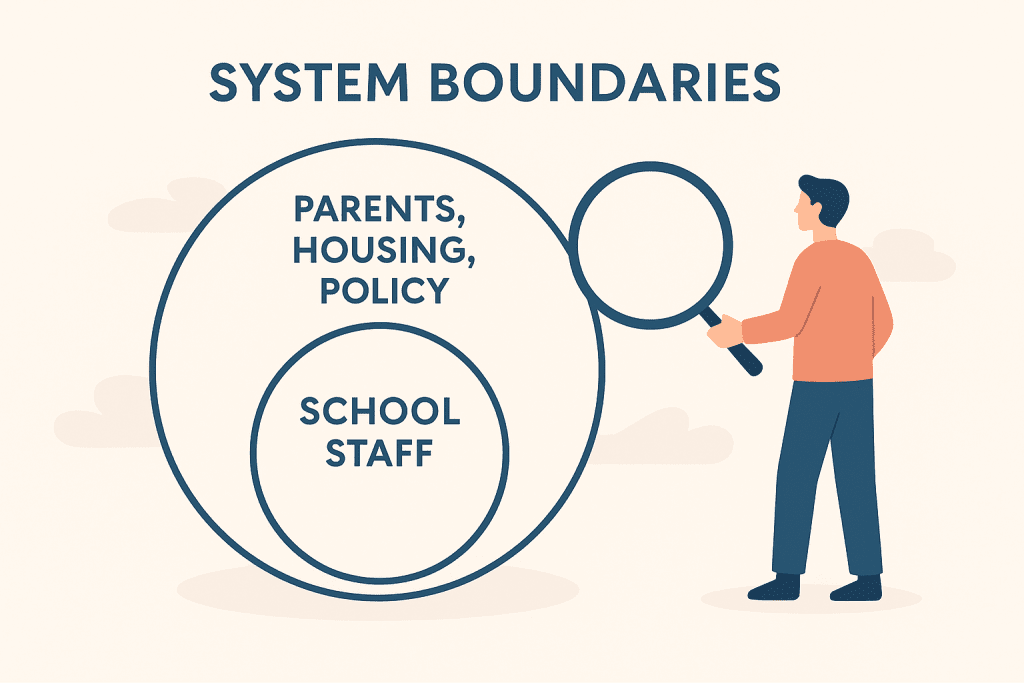
Each boundary line changes your understanding.
And if your boundary is too narrow, you might fix symptoms — while the root causes remain untouched.
So ask:
- “What am I including in this system — and why?”
- “What key players or forces am I excluding?”
- “What changes when I shift the boundary line just a little?”
Boundaries are tools — not truths.
Good consultants know how to use them with care, and redraw them as the system reveals more of itself.
💬 Real Talk: Why This Matters to Consultants
If you’re working with clients — businesses, governments, startups, teams —
you’re always working with systems.
And if you only focus on the parts?
You’ll often wonder why your solutions don’t last.
But if you learn to see the system, you can:
✅ Find real leverage points
✅ Anticipate ripple effects
✅ Build adaptive, resilient organizations
✅ Communicate complexity clearly
✅ Deliver solutions that stick
The best consultants aren’t firefighters. They’re system guides.
✍️ Mini-Practice: Sketch Your Workplace as a System
Take 15 minutes. Use pen and paper, a whiteboard, or a digital sketch.
- List the Elements
- People, tools, teams, processes, data, goals.
- Map the Connections
- Who influences whom?
- Where does information or money flow?
- What patterns of trust, conflict, or silence exist?
- Identify the Purpose
- What does this system actually produce day-to-day?
- Is it aligned with its official goals?
- Question the Boundaries
- What did you leave out? Why?
- What external actors or conditions shape what happens inside?
Reflect:
- What surprised you?
- What seems disconnected, but maybe isn’t?
- Where might a small change unlock something big?
🧠 Final Thought
A system isn’t just a group of parts.
It’s a living web of connections, flows, feedback, and purpose.
Once you start seeing like a systems thinker,
you begin to notice what was once invisible —
and you start helping clients in ways that truly last.
Welcome to the shift. Let’s keep going.
- The Whisper of the Whole: A Systems Thinking Guide for Consultants
- What is a System, Really?
- The Living Dance of Systems
- Resilience and the Wisdom of Adaptive Systems
- Roots of Insight
- The Systems Thinker’s Compass
- Drawing Complexity
- Peering Below the Surface
- Master Methodologies in Systems Thinking
- Enhancing Familiar Tools with Systems Thinking
- Transforming Business Through Systems Thinking
- Systems Thinking in Public Policy & Governance
- Sustainable Systems
- Systems Thinking for Engineering & Technology
- The Inner System: You
- The Roadblocks
- The Future of Systems Thinking
- Systems Thinking FAQ: Myths, Misunderstandings & Core Insights


